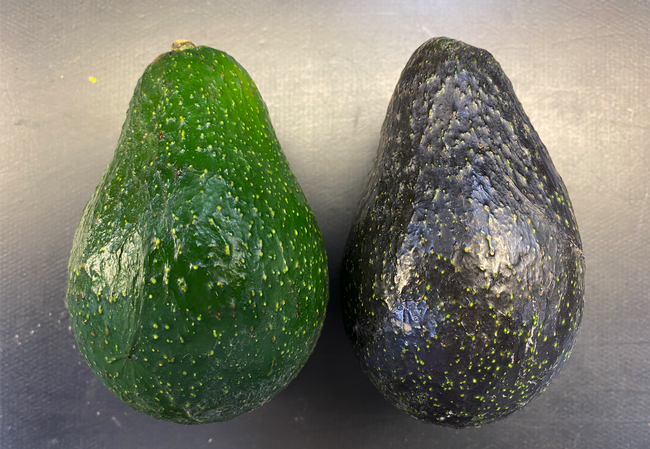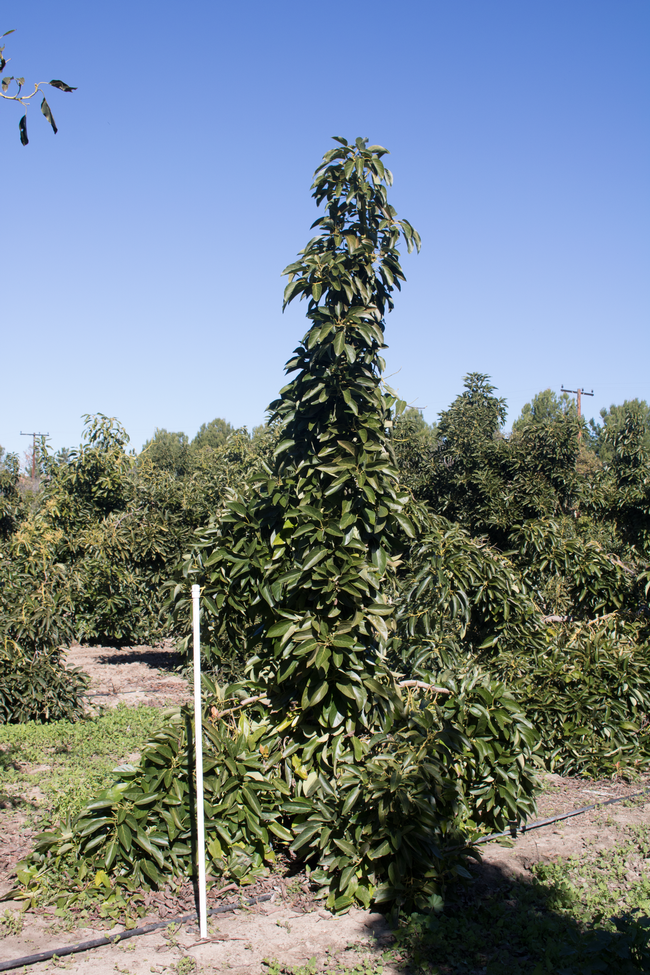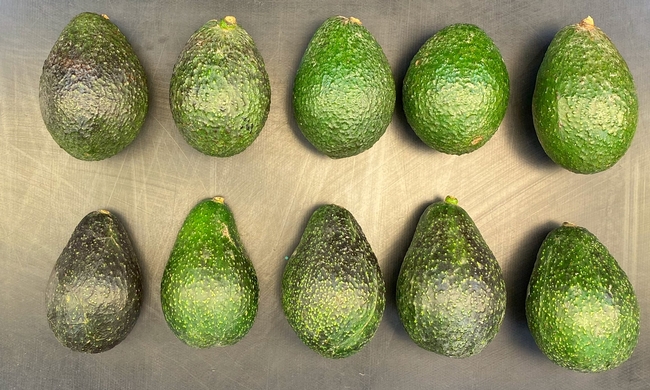A new avocado, one that complements the widely known ‘Hass,' will hit the world market soon. The ‘Luna UCR' variety (trademarked and patent pending) has several characteristics that should be of interest to both growers and consumers, said Mary Lu Arpaia, University of California Cooperative Extension subtropical horticulture specialist based at UC Riverside.
From the grower perspective, the tree is about half the size of the leading variety while producing approximately the same yield per tree as ‘Hass,' meaning that growers could plant more trees per acre, therefore increasing yield. It also makes harvesting easier and safer.
Another advantage is the flowering behavior of the tree. Avocado trees are categorized into either Type A or Type B flower types. It is generally accepted that you need both flower types in a planting to maximize productivity. The ‘Hass' is an “A” flower type and ‘Luna UCR' is a Type “B.”
This is a potential boost for growers since the current varieties that are “B” flower types ripen green and generally receive lower prices for the grower. Similar to ‘Hass,' however, the ‘Luna UCR' colors as it ripens.
“Hopefully, it will receive similar returns to the ‘Hass' once it is an established variety,” Arpaia added.
Fruit breeding is a long-term process that she has navigated by building upon the work of her predecessors. Of course, Arpaia has had strong support from colleagues as well, including Eric Focht, a UC Riverside staff researcher and co-inventor of ‘Luna UCR.'
“We had been looking at ‘Luna UCR' for some time and it was always a very good eating fruit,” Focht said. “After the 2003 release of ‘GEM' (registered and patented as ‘3-29-5', 2003) and ‘Harvest' (patented as ‘N4(-)5', 2003) varieties, ‘Luna UCR' was always the top contender for a next release due to the small, narrow growth habit, “B” flower type and the fruit quality.”
“It's a very nice-looking fruit as well and seemed to be a pretty consistent bearer from year to year.”
A glimpse at how it all started
In spring 1996, Arpaia took over the UC Avocado Breeding Program following Guy Witney who led the program from 1992 to 1995, and Bob Bergh whose initial efforts in the 1950s were foundational in the inception of ‘Luna UCR.'
Arpaia recalls the first trials in the early 2000s of ‘Luna UCR,' which were tested alongside other promising selections from the Bergh program. “There were a lot of varieties that didn't perform well, some of which had poor storage life, an important trait that we need if we are going to get the fruit to consumers across the country,” said Arpaia.
The original seed and selection were planted at the Bob Lamb Ranch in Camarillo, and originally advanced trials of the ‘Luna UCR' variety were planted in four locations: UC Lindcove Research and Extension Center in Tulare County, UC South Coast Research and Extension Center in Orange County, a privately owned farm in San Diego County and another one in Ventura County.
The RECs are among the nine hubs operated by UC Agriculture and Natural Resources to support research and educate the public on regional agricultural and natural resource challenges.
ANR Research and Extension Centers become vital
Unfortunately, the 2017 Thomas Fire burned the avocado trees in Ventura, said Arpaia. After a change in management, the trial located in San Diego County was also terminated, leaving the two trials at Lindcove and South Coast REC.
“South Coast REC has a long history of supporting research and extension activities of high value crops important to California, including avocados,” said Darren Haver, director of the South Coast REC, which was often used to show growers the new varieties that were being developed.
“Many of the REC staff have worked with the avocado-breeding program researchers for more than two decades and continue to work closely with them to ensure the success of new avocado varieties, including ‘Luna UCR',” he added.
In addition to the support provided by South Coast and Lindcove RECs, Arpaia said that UC Kearney Agricultural Research and Extension Center in Fresno County – another UC ANR facility – made it possible for her team to conduct critical postharvest and sensory research, and consumer testing of the fruit, which included up to six-week trials of fruit ratings for storage life and taste.
“UC ANR has played an important role in our ability to not only identify ‘Luna UCR', but in preparing it for the world market, too,” she said.
Preparing to share with the world
Since 2015, Focht had been collecting data for the patent application. Now that he and Arpaia have successfully patented and trademarked ‘Luna UCR,' they are preparing to expand production by engaging interested growers with the commercial partner, Green Motion who is based in Spain.
“Green Motion contracted for 1,000 trees to be generated by Brokaw Nursery and those trees are currently being distributed, with earliest field plantings likely taking place in fall,” explained Focht.
Focht also said that Mission Produce, based in Oxnard, CA has contracted to graft over a small number of “B” flower type pollinizer trees to the new ‘Luna UCR' variety, possibly making way for a small number of avocados to be available the following year.
Once planted, the avocado trees will come into “full” production in about five years.
To read this story in Spanish, visit: https://ucanr.edu/blogs/blogcore/postdetail.cfm?postnum=58991


